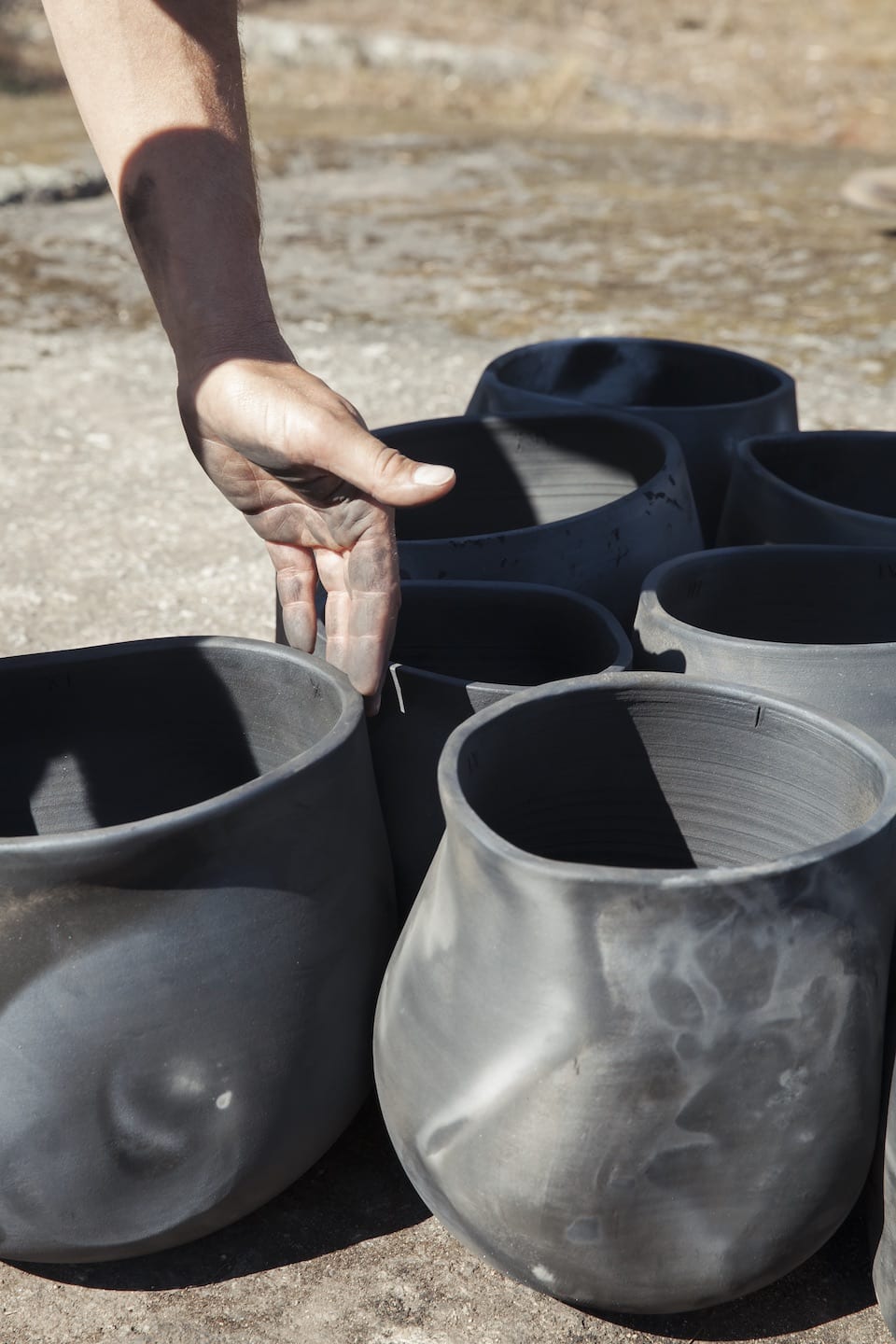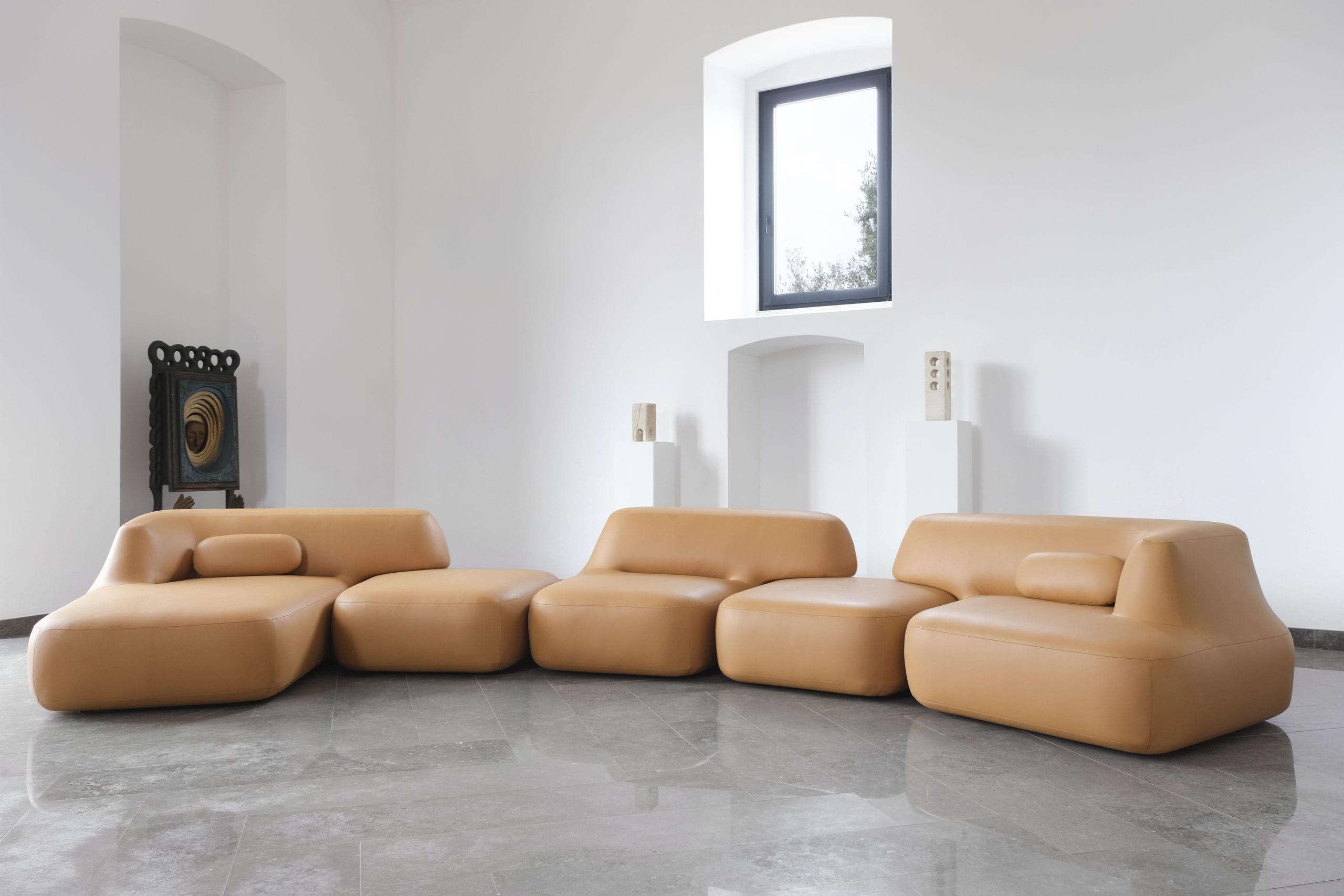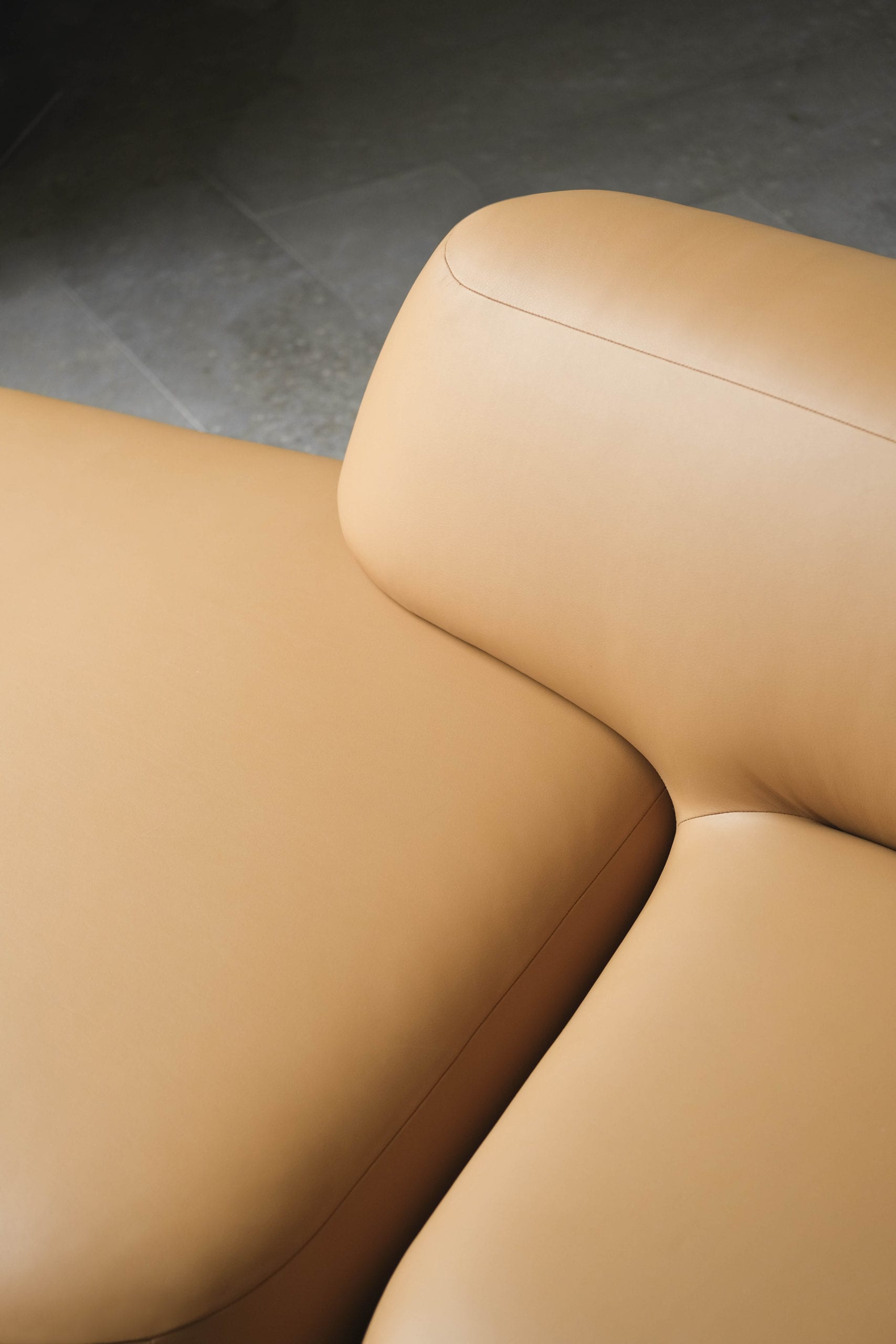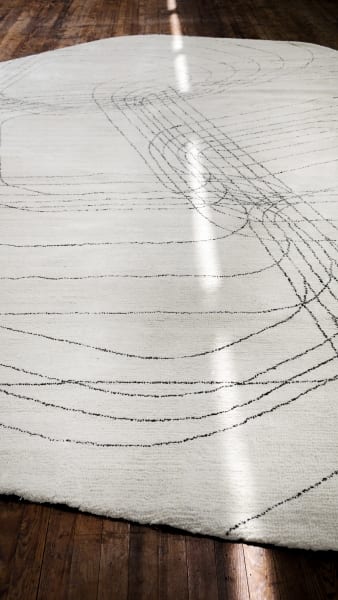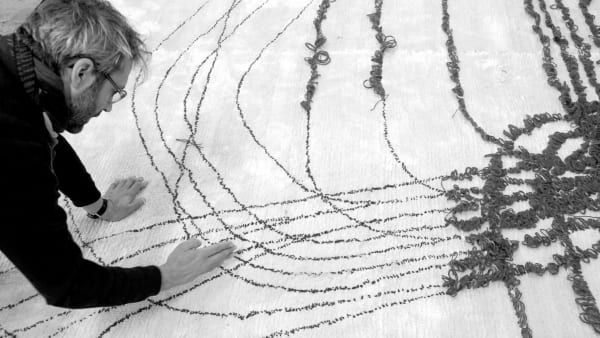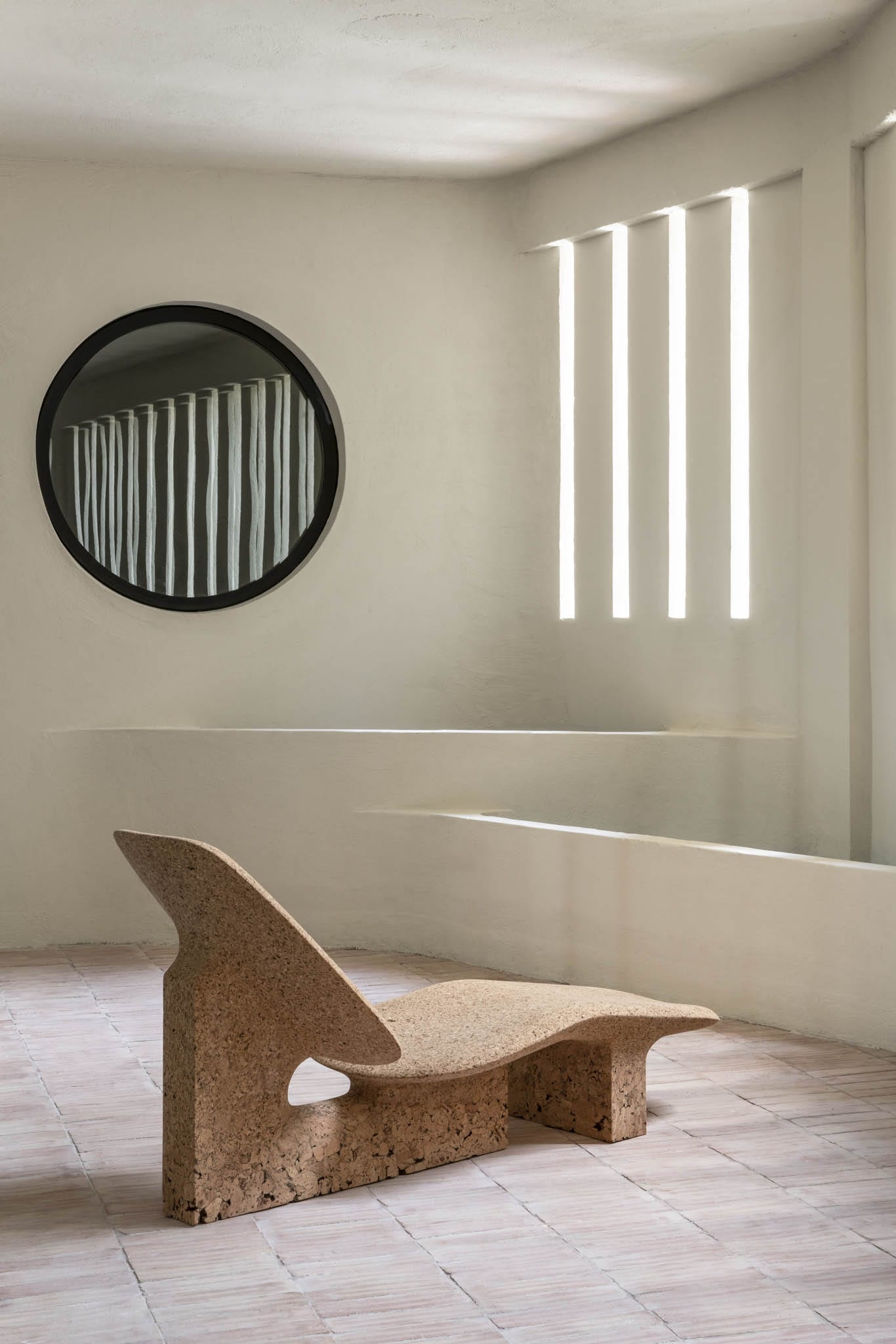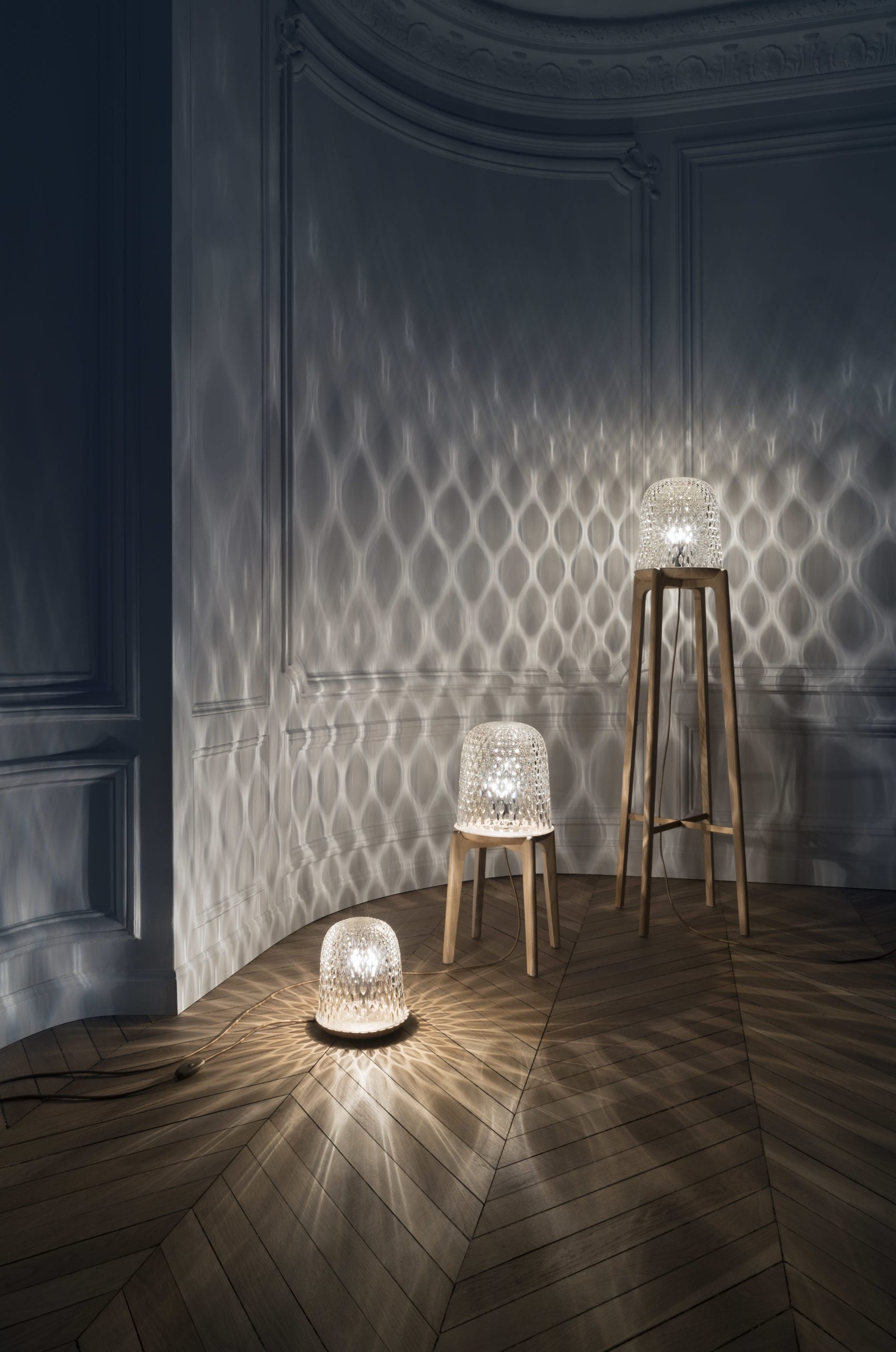After growing up in Brittany and training in metal sculpture, and then continuing his professional training in Paris, designer Noé Duchaufour-Lawrance is now pursuing his path in Portugal, while also running the Paris studio. He began his career as a designer in 2000 and quickly met with dazzling success thanks to his emblematic achievements such as the design of the restaurant, Sketch, in London. In 2018, he moved to Lisbon to open his Made in Situ gallery and explore the richness of a “place marked by a strong identity”.
Par Excellence had the opportunity to interview this renowned designer. Noé opens up to us about the reasons that pushed him to move away from the French capital, gives us his vision of Portuguese craftsmanship and lets us discover some pieces of his new collection.
Noé, before joining the Arts Décoratifs school in Paris, you trained as a metal sculptor. What did this initial training bring you? Can you tell us more about your path, your career?
My creative process is often based on working with my hands. It is sometimes by directly throwing myself into working on a model that the inspiration materializes.
In my view, you are in the same process whether you are sketching or drawing. I understand it as artisanal work; there is, for me, this idea of working with a tool to create.
Compared to an industrial design profile, it seems to me that a visual artist’s eye is liberating in the creative process; in the sense that I approach projects in an abstract way or, by contrast, very instinctively, directly through the material.
This manual work also extends later into the design process; I make many decisions based on prototypes or sections with my teams and partners.
From my training in sculpture, I like having contact with the material and the textures, the perpetual questioning of the way to build and make each thing.
I like going to workshops, to interact with craftsmen. Compared to other designers, I am perhaps less apprehensive about approaching manual skills. I don’t hesitate to go into the manufacturing techniques, to ask questions to bring quick answers. Through this direct link, in a way, we together erase the lines between conception and realization.
Since 2018, you have been based in Lisbon and are sharing your time on projects between France and Portugal, why this departure? Does your move to Portugal mark a new period in your career?
Indeed, I moved to Lisbon in the summer of 2018. Choosing a new country means leaving your comfort zone, looking and perceiving things differently. I grew up in Brittany. So, while I was living in Paris, I was looking for a place to breathe and see the horizon. It was a time in my life when I really needed space and a place with a strong identity. These elements are necessary and inspiring for my work. In Portugal, the ocean/land relationship offers this opportunity.
I have worked a lot in my life, sharing time with artisans. I also find the industry fascinating, the whole process that involves the know-how. I wanted to find a place where design was an integral part of the economic activity. Portugal is a country in flux, in transition, rooted in heritage but currently on the move and this dynamic is one of its assets. It seems to me to be one of the only countries that always returns to its roots. Certain traditions are still very present. The country remains attached to a certain form of “simplicity” which, in my opinion, is essential.
“Choosing Portugal means taking a new approach – getting physically close to the work of the artisans, to their workshops.” – Noé Duchaufour-Lawrance
It’s exciting to be a stranger in a new country, it gives you energy and momentum. This feeling allowed my project to come to life, with great moments of excitement and exploration, like the beginning of a love story. In Portugal, I launched a design “laboratory” called MADE IN SITU. In parallel, I continue to run the Paris studio. It is more and more dedicated to high-end and collectible design furniture. We are developing custom pieces for international private clients and are preparing the release of a furniture collection for next year. We continue our fruitful collaborations with major international players such as Bernhardt Design, Saint Louis, Revol, La Manufacture and Ligne Roset. It’s all about the people and the exceptional encounters I make along the way.
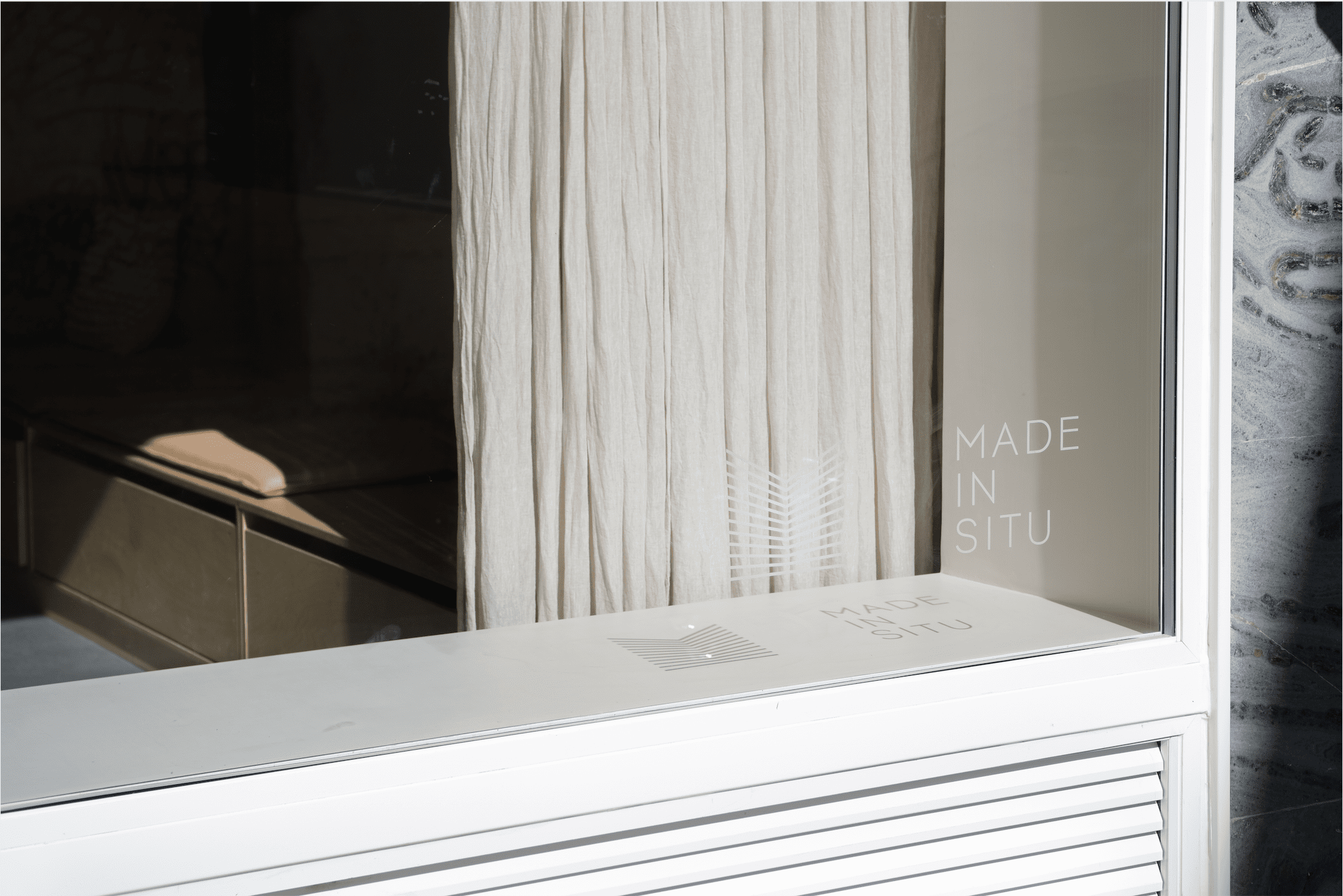
In the course of your life, you have lived in Brittany, in Paris, and now in Portugal. We understand that nature and travel are a great source of inspiration. How do these inspirations translate into your design and choice of materials?
I have fond memories of a childhood spent far from the city, by the sea, which I regularly reactivate in my projects.
Without imitating it, I am inspired by nature, its universality, the mysteries it contains, and the fascination it brings. The flexible line of an armrest, the organization of a space, the softness of a seat, the ramification of a structure, are all elements that allow me to express this organic and sensitive link between the body and the environment.
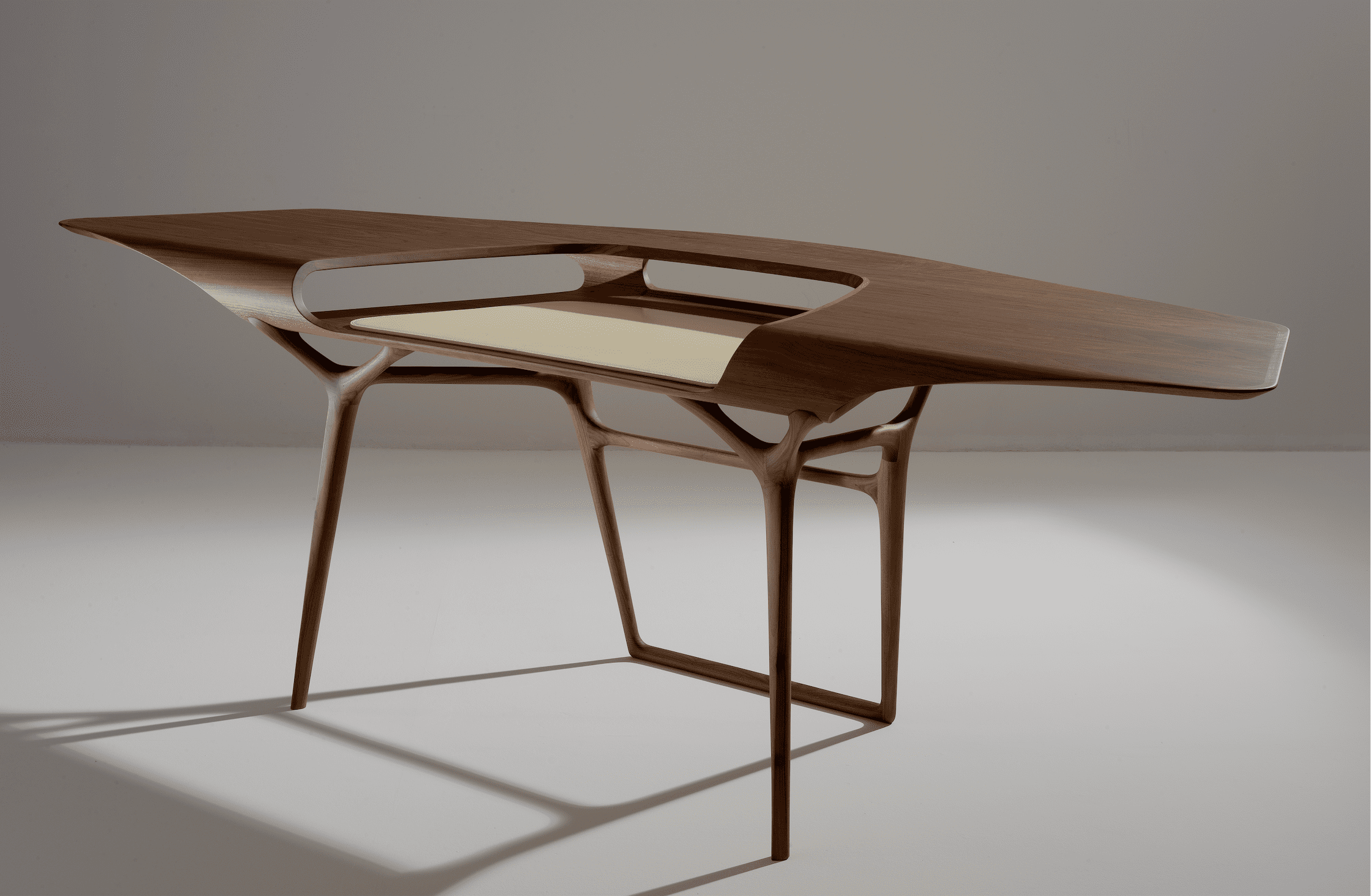
Is there a different approach to craftsmanship between France and Portugal?
When I started exploring the know-how in Portugal, I came to a brutal conclusion: craftsmanship is valued more highly in France than in Portugal where it suffers from a cruel and unfair lack of recognition. It was considered for years as a lesser art. The most immediate consequence was that few young people wanted to take over the workshops and during the last decades, expertise disappeared when the craftsmen retired from their businesses. But things are changing very quickly at the moment, and this is a very good thing.
On our scale, with the MADE IN SITU collections, we participate in highlighting certain trades, vernacular materials and people. We are quite far from French-style excellence, but we create direct relationships with people, with the material, and try to tell through the pieces the stories anchored in their heritage.
Crafting of the BARRO NEGRO Collection
In 2020, you opened a gallery in Lisbon, called Made In Situ. Can you tell us about this great project? Which artisans do you collaborate with on this project?
After my first year in Portugal, I initiated the MADE IN SITU project. It is about exploring Portugal through crafts, human encounters and vernacular materials. Last September, MADE IN SITU unveiled its first collection in our Lisbon gallery: BARRO NEGRO. We created an immersive installation with sound, and a film, to magnify a series of objects made of black ceramic. It was very moving because it was a personal project that I had been carrying around for a long time and that finally saw the light of day. The collections are the result of our investigations and long-term collaborations with Portuguese artisans. We are now preparing the release of our second collection, BURNT CORK, a series of sculptural furniture, carved in blocks of cork, which will be on display from May 20 in Lisbon.
MADE IN SITU IS THE MANIFESTATION OF A CREATIVE DYNAMIC OF APPERCEPTION, ROOTED IN THE TREASURES OF A TERRITORY, ITS ARTISANS AND ITS SYSTEMIC LINKS WITH NATURE. REVEALING A CYCLE OF SEASONS, EACH WITH ITS OWN HISTORY.
BARRO NEGRO, first collection of the Made in Situ Gallery
You put a lot of importance on craftsmanship, how do you interact with artisans and to what extent do you integrate them into your creative process? Is the starting point the material, the technique, an encounter, a drawing?
Over time, I have realized that the ideal project is actually quite simple on paper. It is a project where all the protagonists speak with one voice. A client who trusts you, partners who understand you, and a design that is in line with its context… From this equation, honest and often obvious projects are born.
I approach creation through its context, no project should be dissociated from it. It is this context that feeds my inspiration. So, for the partner craftsmen, the meeting is the starting point. I like it when the first exchanges are fluid, when the artisans teach me things, when they are open to going beyond their habits, to explore new techniques, to propose new solutions, in the service of design.
You have collaborated with several artisans from the Par Excellence collective, Ozone, the Manufacture de Tapis de Bourgogne, Jouffre and the Ateliers Saint-Jacques.
What common quality do you appreciate in these artisans? Can you tell us more about your collaborations with each of them?
We can indeed identify common traits between the professionals of the PAR EXCELLENCE collective with whom I have had the chance to work.
Clearly, the standards are very high and they are partners capable of a strong work commitment.
“With our interlocutors, we feel that each one is full of the same passion for his job. In the daily relationship, they are all experts, eager to learn new things, who show a desire to progress, and an ability to overcome obstacles at each stage of the development or manufacture of the pieces.”
Especially for the past 3 years, we have been working on many projects with the collective. It’s impossible to honor everyone!
The first example that comes to mind concerns Ateliers Saint-Jacques and their work on an exceptional desk, an extremely sculptural, not to say very complex piece that we delivered abroad in 2020. On the one hand, I was sensitive to their appetite for dialogue on design from the very first exchanges. It was like fuel. We also appreciated the way the wood and stone workshops collaborated throughout the project; their great technical knowledge but also their openness or perhaps their humility, they know how to question their knowledge and propose tailored solutions. On the other hand, I want to emphasize the commitment and personal engagement of the teams: they really gave everything to complete the manufacturing in time, always with great professionalism and they showed great nimbleness when it came to installing the office on site in record time. Well done!
I would also like to mention a past collaboration with the teams at Ateliers Jouffre for a custom seating package in 2019-2020. With my team, we benefited from their expertise in guiding and monitoring the project from start to finish. It was focused and ahead of time; the work provided was very thorough at each stage on the pieces while the timing was very tight. This exceptional sense of service was very reassuring for us and the clients. It enhanced the technical work of developing and executing the perfect furniture. A form of elegance that suits the type of project and client that we accompany.
Discover the current and upcoming projects of Noé Duchaufour-Lawrance:
- Educational direction of the Fondation d’Entreprise Hermès, the 5th edition of the Académie des savoir-faire, vintage 2021, dedicated to glass and crystal
- May 20, 2021: launch of the Burnt Cork collection, Made In Situ Gallery, Lisbon
- May 2021: Launch of furniture for La Manufacture (armchair, coffee table)
- Summer 2021 : Creation of glass coffee tables with the InGalleria gallery, Punta Conterie, Venice
- Collaboration on a collection of bronze pieces with Maison Intègre
- Development of the publishing house Noé Duchaufour-Lawrance Editions which will be launched in the first half of 2022
Follow Noé Duchaufour-Lawrance at @noeduchaufourlawrance. For any information on his design, reach out at contact@ndldesignstudio.com



